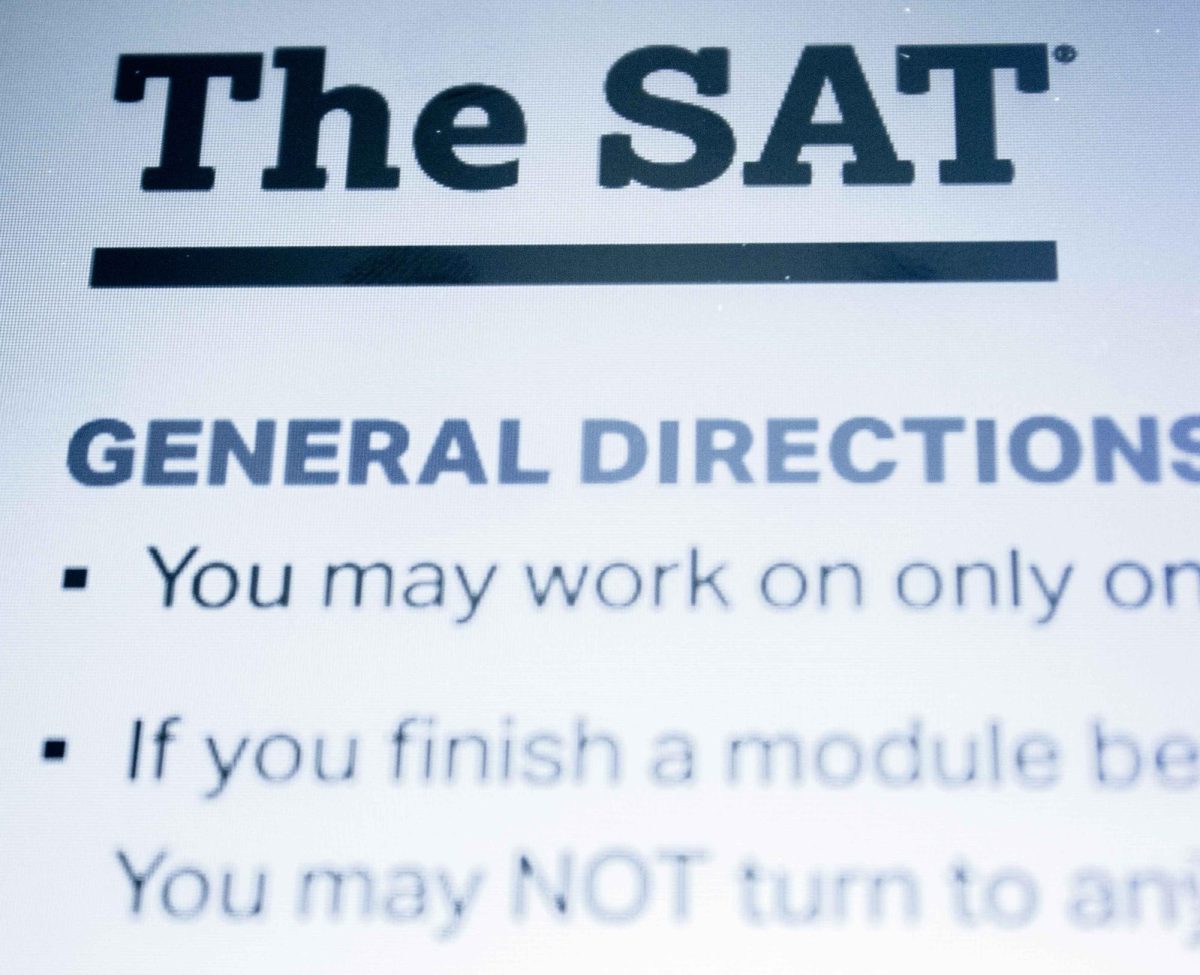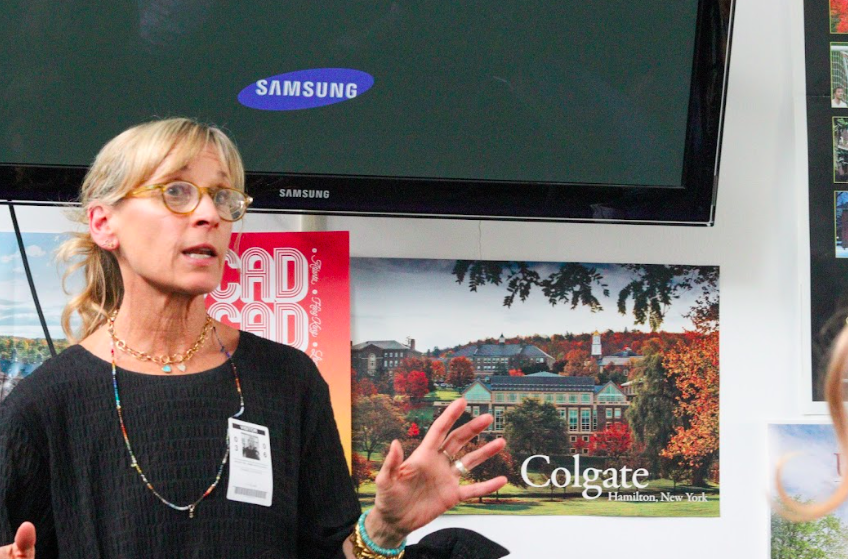As of Saturday, March 9, students will take the Scholastic Aptitude Test (SAT) solely online. The administration of the test will continue to be in-person, but will no longer involve physically filling out a piece of paper; instead administered on a computer. The digital test introduced multiple new changes, including increased adaptivity, altered question formats, and a shorter length.
The SAT assesses high school juniors’ and seniors’ academic college readiness and aptitude, continuing to do so in its newly digital format. The test continues to score out of 1600, 800 points dedicated to math and 800 to reading and writing.
“Content-wise [the SAT] is still very similar…It measures reading comprehension, asks questions about grammar and punctuation, and then it has math [problems] up through Algebra Two,” said Alicia Hovey, senior director at Compass Education Company and administrator of the SAT and PSAT.
Though much remains the same, the digital SAT adds new alterations to several test questions. Previously, the SAT reading section provided students with long passages accompanied by multiple related questions. The new format presents one-paragraph passages, each with one corresponding question each.
Additionally, the use of calculators was formerly prohibited for certain sections of the math test, but the new digital SAT allows calculator usage throughout the entire test.
One of the major SAT evolutions is its change to an adaptive test, meaning that the test’s difficulty adjusts based on the taker’s performance.
“Because [the new test is] adaptive, there are two sections and each section has two stages. The first section is reading and writing, and depending on how you do in the first stage of that section, you’ll be directed to a less difficult or more difficult second stage,” Hovey said.
Some view an adaptive test to be a positive change, due to its enhanced ability to measure individual students. Archie Williams senior Jackson McFerron, who took the original paper SAT during his junior year of high school, views an adaptive test as contradictory to the objective of standardized testing.
“It feels kind of wrong for a standardized test like the SAT to be adaptive and for a standardized test to have different questions for different students. Every student having the exact same test all around the U.S. is one of the most important reasons we have the SAT; because everyone’s taking the same test and on the same grading scale,” Jackson said.
Another change to the SAT is its length. Previously the test lasted three hours, but now it takes approximately two hours and 14 minutes to complete.
“[The online SAT] was the longest test I’ve ever taken, and if the test was longer it would definitely [have been] worse. Having it shorter made the test more manageable,” said junior Siena Michelson, who took the digital SAT.
In addition to the other smaller adjustments, the biggest change the SAT underwent was its switch from paper to digital. With technology so prevalent in students’ lives, students such as Siena believe digital tests are a more accessible and comfortable way to take the SAT.
“I like the digital version. I’ve taken a lot of digital tests, so I’m used to it…I feel like you are used to the device you’re doing it on and tools like the Desmos Graphing Calculator are really helpful,” Siena said.
Although the digital test presents new tools that benefit test takers, such as the Desmos Graphing Calculator, Jackson believes it lacks certain positive aspects of paper tests.
“I think that the main pro of having a paper test is being able to mark it up and cross answers out and circle things. One of the biggest things that you can do while taking the test is keep your pencil writing because it keeps your brain working,” Jackson said.
Students may see the updates to the SAT as positive or negative, but the College Board hopes that this new adaptive test will allow for a better assessment of student aptitude.
“The test is able to assess performance in fewer questions because of its adaptive nature. [The College Board] put a lot of time and effort and research into creating this new test, so they do feel like it’s a better measure of student’s performance, in less time and in fewer questions,” Hovey said.
The new digital and adaptive nature of the SAT has raised both positive and negative reactions from test-takers, but the digital SAT is here to stay, at least for the time being. The SAT is ever-evolving, and as students continue to take the test, it will continue to change and reflect further understanding of its impacts and capabilities.










